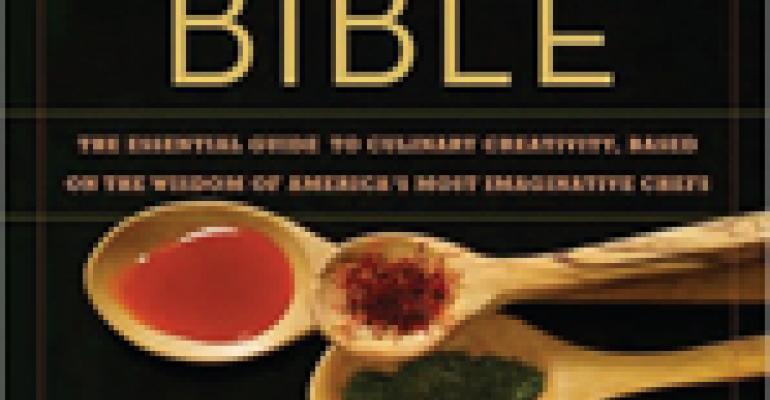
Nothing about food is more subjective than its flavor, which can invoke agony, ecstasy or something in between from the person doing the eating. That's why cooks who consistently create meals whose flavors bring pleasure to a wide range of customers are true magicians. No chef wows 'em every time; the great ones come close.
Another key: When a skilled cook can deliver great flavor experiences even while using up orphaned ingredients from a restaurant's walk-in or pantry, the food cost will always look good. And in the current economy, the ability to conjure up flavorful meals from lower-cost ingredients makes a cook worth his or her weight in gold.
How can chefs pull all this off? A handful innately seem to know the flavor combinations that will work best. Everyone else, though, has to rely on trial and error. Or at least they did before the arrival of The Flavor Bible: The Essential Guide to Culinary Creativity, Based on the Wisdom of America's Most Imaginative Chefs (Little, Brown and Co., $35). In it, ace culinary writers Karen Page and Andrew Dornenburg weave together the collective intuitions of dozens of leading chefs to come up with a 380-page book about cooking that contains not a single recipe. It offers instead a series of exhaustive lists that describe what-goes-best-with-what, all of it so arranged as to make flawless favor development accessible to all.
Articulating this process by words alone is a tall order. It's challenging to explain flavor development without the luxury of side-by-side taste comparisons to illustrate each point. But Page and Dornenburg are skilled-enough wordsmiths to do it — no small feat.
Their book “is an inspirational idea starter,” they say. “It is to cooks what a thesaurus is to writers: an invaluable reference tool. It can help you find exactly what you're looking for in order to put the finishing touches on your creations.”
Their chosen format carefully addresses the many aspects of flavor readers should consider as they come up with dishes on their own:
-
Taste, or what is perceived by the taste buds: sweetness, saltiness, sourness, bitterness and umami, which the authors call “savoriness.”
-
Mouthfeel, or what is perceived by the non-taste bud parts of the mouth. That means temperature, texture, piquancy and astringency.
-
Aroma, or what is perceived by the nose. Key factors here are pungency and chemesthesis (e.g., tingles from carbonated beverages; heat from chile peppers).
-
The “X” factor, which is to say the visual, emotional, mental and spiritual aspects that are attached to every food.
If the goal of your restaurant is to faithfully reproduce classic flavor pairings that have withstood the test of time, you probably don't need this one. But if you want to keep up on contemporary flavor trends, minimize your food cost and sneak in thrifty ingredients along the way, buy a copy of this book.





